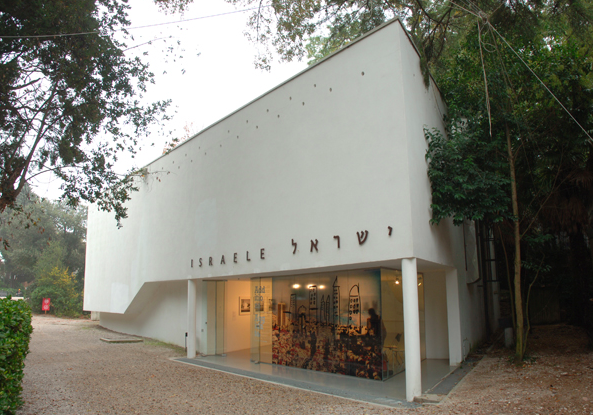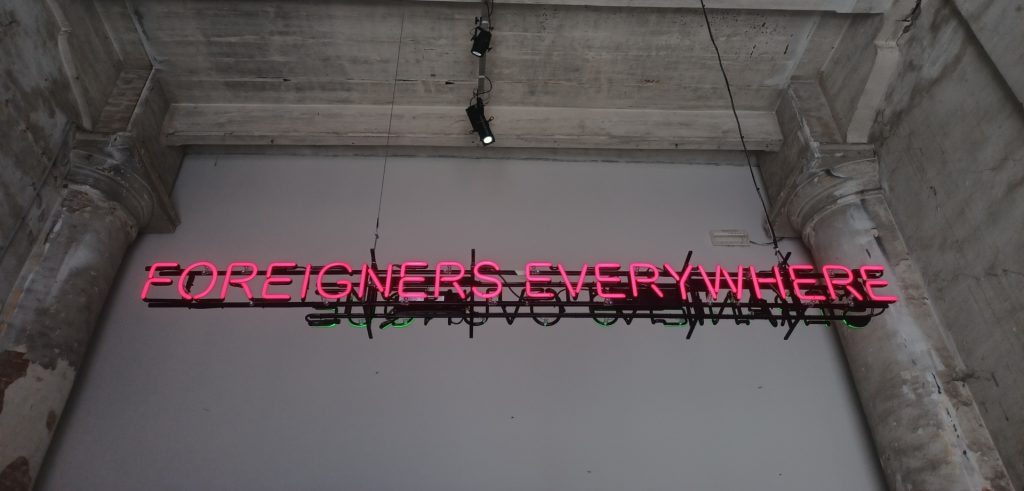Author: Pepi Nikolopoulou
Artist Ruth Patir, who is representing Israel at the Venice Biennale 2024, refuses to open her exhibition until a ceasefire and hostage release agreement between Israel and Hamas is reached.
Since February, thousands of pro-Palestinian activists have been trying in vain to convince the Venice Biennale, which currently has all eyes on it, to ban Israel because of the war in Gaza. And while all the international pavilions of the Biennale have been opened, the doors of the Israel pavilion remain locked, on the orders of the artist and the curators representing Israel.

“The artist and the curators of the Israeli pavilion will open the exhibition when a ceasefire agreement and hostage release is reached,” reads a sign taped to the door of the pavilion by the Israeli team.
Patir and curators Mira Lapidot and Tamar Margalit are behind (M)otherland, a video exhibition focusing on fertility, and one of 88 countries represented at the international art fair. “If I’m given such a remarkable scene, I want to make it count,” Patir wrote on Instagram. “I feel that the time for art has been lost and I need to believe it will return.”
“I am an artist and educator, I firmly object to cultural boycott,” she continued. “But since I feel there are no right answers and I can only do what I can with the space I have, I prefer to raise my voice with those I stand with in their scream, ceasefire now, bring people back from captivity.”

The war has affected many important cultural events. There were many protests at the Oscars and Grammy Awards night, an artist discreetly included a “Free Palestine” message in his work at the Whitney Biennial, and there is much debate about Israel’s participation in the Eurovision Song Contest.
Curator Tamar Margalit said visitors will still be able to see one of Patir’s video works through the pavilion windows. In this two-and-a-half minute project, Patir used computers to bring to life images of ancient fertility statues, which are a recurring motif in her work. The female statues, many of which are cracked or missing limbs, come to life in the film and move around and around, wailing in grief and anger. A work that its creator Ruth Patir says reflects her grief and frustration at the war conflict.
In recent decades, the Venice Biennale has often suffered the consequences of Israel’s strained relations with other Middle Eastern countries. In 1982, following Israel’s invasion of Lebanon, an Italian communist group bombed outside the Israeli pavilion, destroying some of the artwork inside. More recently, in 2015, pro-Palestinian activists briefly occupied the Israeli pavilion and the Peggy Guggenheim collection.

The furore surrounding Israel’s pavilion this year began in February, when the Art Not Genocide Alliance, an activist group, published an open letter calling for the exhibition to be banned due to Israel’s “ongoing atrocities” in Gaza.
“Any official representation of Israel on the international cultural scene is an endorsement of its policies and genocide in Gaza,” the letter said. The signatories include photographer and activist Nan Goldin and artists representing their countries in 14 of the pavilions at this year’s Biennale, including those of Chile, Finland and Nigeria.
Biennale organizers said in a statement: “The decision of the artist and curators is not to cancel themselves nor the exhibition; rather, they choose to take a stance in solidarity with the families of the hostages and the large community in Israel who is calling for change.”
Palestinian artists are represented at the Venice Biennale in the main exhibition, as well as through a parallel event entitled South West Bank, which also features artists from outside the region.



